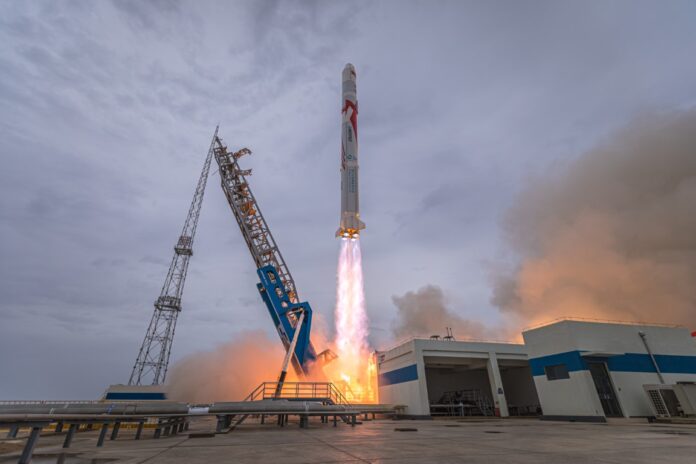On July 12, 2023 at 1 am UTC, Landspace (蓝箭航天), a Chinese commercial launch company, achieved a world first: it successfully launched a methalox-fueled rocket, the Zhuque-2, into orbit. And while the medium-lift expendable launch vehicle is not necessarily ground-breaking from a technological perspective, it represents a very significant milestone in China’s launch landscape, paving the way for an increased role of commercial companies in China’s space industry.
The Growing Maturity of Chinese Commercial Launch
Since 2014, there have been at least a dozen Chinese commercial launch companies striving to develop rockets, in line with trends seen on the European and US space ecosystem. In China, the first significant milestone was achieved in 2019, with the successful orbital launch of the Hyperbola-1 commercial rocket from the Chinese company iSpace (星际荣耀).
While several other rockets have since entered into service (Ceres-1, Lijian-1, …), commercial launches have been largely limited to small solid-fueled rockets with low launch frequencies. The recent accomplishment by Landspace, however, signals a potential shift in China’s space sector, with 2023 emerging as a year of transition. The company is now the second Chinese commercial entity to successfully launch a liquid-fueled medium-lift rocket, coming after Space Pioneer’s launch of the Tianlong-2 vehicle in April 2023.
The Zhuque-2, with its substantial 6-ton payload capacity for Low Earth Orbit, marks a considerable leap forward for China’s commercial launch fleet (see graphic below). And furthermore, this progress isn’t stopping there. By the end of this year, another domestic competitor, Orienspace (东方空间), is planning the inaugural launch of the Gravity-1, a solid-fueled rocket with a payload of 6.5t to LEO. And in 2024, several additional liquid-fueled rockets are scheduled to debut: Deep Blue Aerospace’s Nebula-1 (1t to LEO), Space Pioneer’s Tianlong-3 (17t to LEO), and Galactic Energy’s Pallas-1 (5t to LEO).
The introduction of these new launch capabilities comes in addition to a ramp-up of the existing ones: Landspace has its sights set on 2-4 launches of the Zhuque-2 in 2024, Galactic Energy is planning at least 6-8 launches of the Ceres-1, there is at least one confirmed launch of the Gravity-1, 6 for the Kinetica-1, 4 of the Hyperbola-1, and likely additional Tianlong-2 launches. This leads to suggest that the amount of payload delivered into orbit by Chinese commercial rockets could (easily) increase by a factor of at least 10 compared to 2022.

Zhuque-2: a Path for Sustainability?
The successful launch of Zhuque-2 marks not just a technological breakthrough, but also a commercial turning point for Landspace. With their launch services now proven, the company is poised to start earning revenue, a development that has been sorely needed given the firm’s financial difficulties. The company had put a halt to the development of the small solid-fueled Zhuque-1 back in 2019, effectively taking away any means for the company to generate income in its early years, and their last round of funding dates back to 2020. This is in stark contrast with a comparable domestic competitor, Galactic Energy, which has been commercializing the small Ceres-1 rocket, raised funding in 2022, and has announced a new round for the coming months. But the successful launch of Zhuque-2, however, promises to renew investor confidence in Landspace and usher in some much-needed capital into the company.
Beyond sustaining the operations of the Zhuque-2 until it reaches a reasonable launch cadence, Landspace also requires additional investment for the realization of their reusable rocket ambitions. The company has been upgrading the TQ-12 methalox engines to enable throttling and restarting capabilities, essential for vertical landing, and they recently alluded to the possibility of establishing a reusability technology center in Wenchang. Further investments will also have to cover either the modification of the existing Zhuque-2 rocket into a reusable configuration (which is no small task considering the 4-engine layout of the first stage), or alternatively the development of a new series of reusable launch vehicles with a higher payload capacity (Zhuque-3?).
The content of this post is also available as a video on our YouTube channel:



